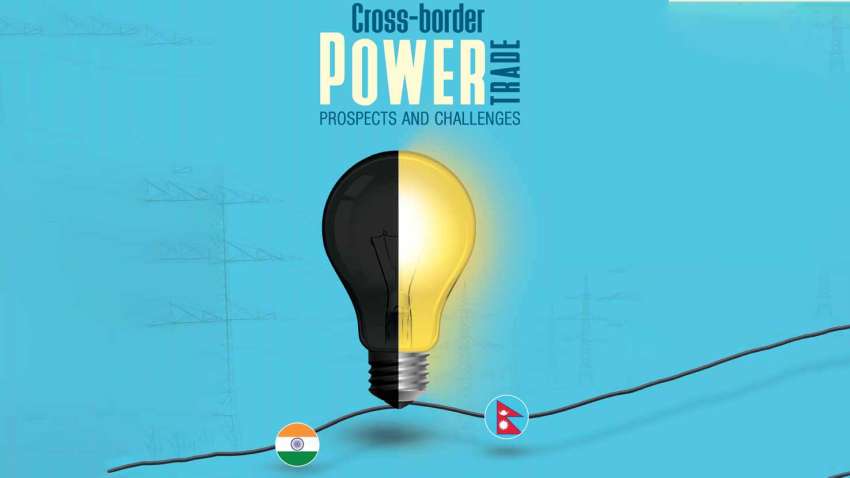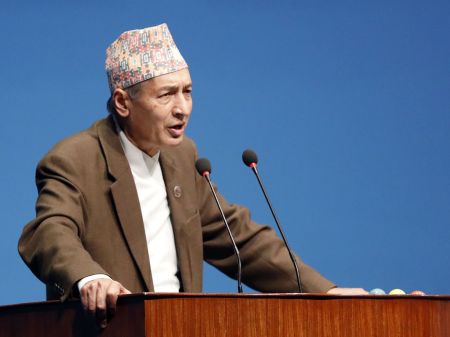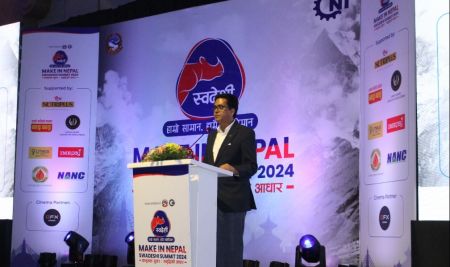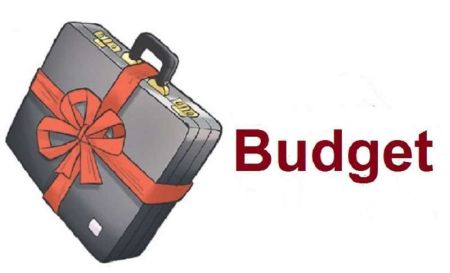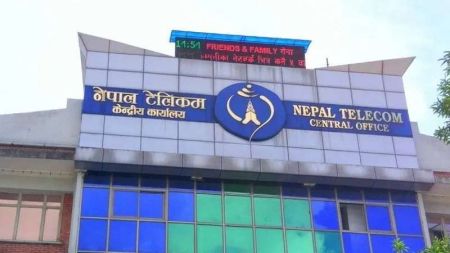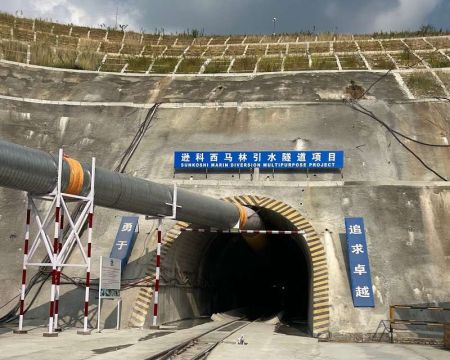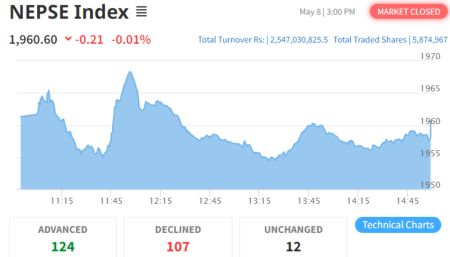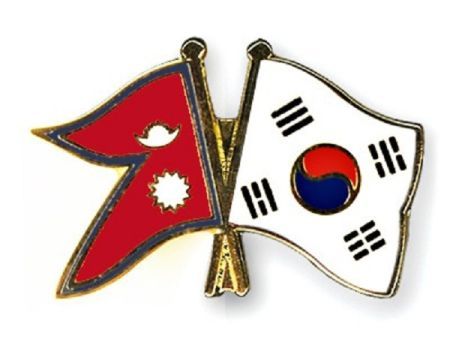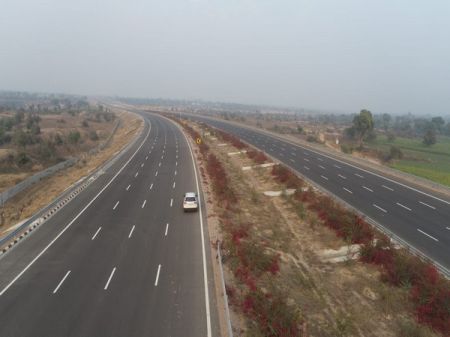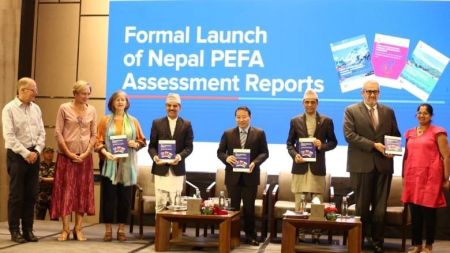BY NEWBIZ TEAM
In the first week of September, the Indian government delivered promising news for Nepal's hydropower industry. The Indian cabinet granted formal approval for the draft intergovernmental agreement on long-term electricity trading between Nepal and India. The decision has opened the door for long-term cross-border electricity exports from Nepal's hydropower projects to the Indian market. This decision comes in the wake of Prime Minister Pushpa Kamal Dahal's recent visit to India, during which an official Memorandum of Understanding (MoU) regarding long-term electricity trade was inked between the two nations on June 1, 2023. The Indian cabinet endorsed the MoU after nearly three months of Dahal's visit.
This decision paves the way for the sale of 10,000 MW of electricity generated by Nepal's hydropower projects to neighbouring India. However, a well-defined framework for exporting this substantial electricity supply has yet to be established.
Nonetheless, Dinesh Kumar Ghimire, Secretary of the Ministry of Energy, Water Resources, and Irrigation, said that the Indian cabinet's decision has created a favourable environment for exporting electricity generated by Nepal's hydropower ventures to India. "To facilitate the timely execution of the MoU, we are planning to formalise an agreement at the energy secretary level between the two nations and swiftly put it into action. The energy ministry is currently in the process of extending invitations to the Ministry of Energy, India," Ghimire said. "The implementation phase will commence once the agreement is signed by the two secretaries."
Ganesh Karki, President of the Independent Power Producers Association, Nepal (IPPAN), said the target of exporting 10,000 MW in 10 years hinges on the rapid development of hydropower projects and international transmission lines. "To realise the export target, the main prerequisite is the construction of new hydropower projects and transmission lines. Likewise, the government needs to resume signing power purchase agreements (PPAs) and foster an environment conducive for the development of these hydropower projects and transmission infrastructure," he added.
Karki said he believes that the signing of a long-term agreement between Nepal and India would attract the interest of both domestic and international investors in Nepal's hydropower sector. "This will serve as a catalyst for increased private sector investments from India into Nepal's hydropower sector," he added.
India has given its nod to import a total of 10,000 MW of electricity from Nepal over the course of a decade which includes 1,800 megawatts generated by projects being built by Indian developers. This includes the Arun-3 H ydropower Project of 900 MW currently under construction in Sankhuwasabha, as well as the Upper Karnali Hydropower Project (900 MW). The remaining 8,200 megawatts will be sourced from various other hydropower projects, according to the Ministry of Energy.
India's SJVN Limited, which is building the Arun-3 Hydropower Project, has secured licences for two more projects: Lower Arun Hydropower Project (669 MW) and the Arun-4 (490 MW). The Arun-4 project is set for joint development by the Nepal Electricity Authority (NEA) and SJVN with SJVN holding the majority stake.
Similarly, India's NHPC Limited is gearing up for two projects: West Seti (750 MW) and the Seti River-6 (450 MW). Additionally, during Prime Minister Dahal's visit to India, NHPC Limited and Vidyut Utpadan Company Limited inked a memorandum of understanding for the joint development of the Phukot Karnali Project (480 MW).
IPPAN President Karki has voiced concerns regarding the ambitious goal of exporting 10,000 megawatts of electricity to India within a decade. He contends that achieving this target could prove to be a formidable challenge if the prevailing structural and policy arrangements persist. Sushil Thapa, the Coordinator of the Energy Committee at the Federation of Nepalese Chambers of Commerce and Industry (FNCCI), echoed these concerns. He said that an enabling environment for international transmission lines and a substantial boost in domestic electricity production were a must to realise the objective of exporting 10,000 MW of electricity within a decade. "In the preliminary agreement, India has expressed commitment to procuring 10,000 MW over the span of a decade. Nevertheless, the precise mechanisms for exporting the electricity generated by Nepal's hydropower projects to India remain ambiguous," he added.
Thapa pointed out that while the Indian government has indicated its willingness to permit electricity exports from Nepal as per the initial agreement, the specific export model and mechanism is still not clear. The question of whether Nepal should seek an independent exporter to facilitate export to India or if a government agency will directly oversee the procurement, remains unresolved. "Hence, I believe the realisation of this vision hinges on the signing of a subsequent agreement involving both countries," he added.
However, India's 'Guidelines for Import/Export (Cross-Border) of Electricity-2018' contain some clauses that present significant hurdles to the export of electricity from Nepal. These guidelines intricately connect electricity trade with international diplomatic relations.
Clause 4.6 of the Guidelines explicitly states, "Considering the fact that import/export of electricity involves issues of international relations; the Designated Authority will grant approval; or otherwise only after taking concurrence of Govt. of India."
Similarly, Clause 6.1 of the Guidelines appears to present obstacles to exporting electricity produced in Nepal to India due to the phrase 'Government of India reserves the right...'. This provision has led to India's reluctance to procure electricity not only from projects with Chinese investments but also from projects involving Chinese contractors. Clause 6.1 states, "The Designated Authority shall grant approval for export/import of electricity only after taking into account the generation capacity (as available) and the demand. Imports may normally be permitted only when the demand exceeds generation capacity (as available) in the country; and Exports may normally be permitted in case of capacity being in excess of the domestic demand. However, the Govt. of India reserves the right to import/export electricity from/to neighbouring countries for reasons of larger policy interests."
Meanwhile, the internationally renowned US-based intelligence organisation, Recorded Future, has highlighted the looming threat of 'cyber strikes' on India's electricity infrastructure in The New York Times. This underscores the potential for India to introduce additional conditions for Nepal's electricity procurement. It is evident that Nepal must navigate these and similar obstacles and challenges to unlock the pathway to exporting electricity to India.
Import/Export Projection
India was allowing Nepal to export 452 MW until the fiscal year 2022/23. However, recent approvals have paved the way for an increase in export quota to 630 MW. This development aligns with the ambitious vision of the Ministry of Energy, Water Resources, and Irrigation, which has set a target of having an installed capacity of 28,713 MW by 2035. The ambitious targets have been articulated in the Energy Development Roadmap and Action Plan, 2023, proposed by the ministry.
The report prepared by a working group under the guidance of the Ministry's Joint Secretary, Sandeep Kumar Dev, was formally presented to Minister for Energy, Water Resources, and Irrigation, Shakti Bahadur Basnet, on September 17, 2023. Presently, Nepal has an installed capacity of 3,000 MW. To realise the outlined objectives, Nepal needs to generate more than 25,000 MW over the next 12 years.
Within the same strategic framework, the ministry has proposed exporting 10,000 MW of electricity to India and an additional 5,000 MW to Bangladesh over the next decade. The Ministry's blueprint has clearly specified the export targets. It envisions exporting 1,000 MW to Bangladesh by 2029, increasing it to 3,000 MW megawatts by 2033, and ultimately achieving the milestone of 5,000 MW by 2035.
Need for high-capacity transmission lines
The lack of adequate cross-border transmission lines can prove detrimental to Nepal's power export ambitions. Currently, Nepal has only 11 large and small cross-border transmission lines with capacities ranging from 33 kV to 400 kV. Among them, the largest Dhalkebar-Muzaffarpur 400 kV transmission line, with a capacity to transmit 1,000 MW, has been permitted to transmit only 800 MW thus far.
According to NEA, several transmission lines facilitate electricity exchanges between Nepal and India. The Kataiya-Rajbiraj 33 kV transmission line enables an exchange of 8 MW of electricity, while the Sursand-Jaleshwar 33 kV transmission line supports a 12 MW exchange capacity. Similarly, the Jayanagar-Siraha 33 kV transmission line can handle 7 MW, and the Raxaul-Birgunj 33 kV transmission line has a capacity of 12 MW.
Furthermore, power can be exported to India through Nepalgunj-Nanpara 33 kV transmission line. Likewise, Kataiya-Kushwaha 132 kV transmission line and its counterpart, the Kataiya-Kushwaha II 132 kV transmission line, each provide a substantial capacity of 80 MW for cross-border electricity exchange. There is also infrastructure in place to supply 80 MW via the Raxaul-Parwanipur 132 kV transmission line and 40 MW through the Ramnagar-Gandak 132 kV transmission line.
The western-most Tanakpur-Mahendranagar 132 KV transmission line has the capacity to transmit 75 MW of electricity, further enhancing energy connectivity in the region.
Prakash Dulal, the Deputy Secretary General of IPPAN, said at least five high-capacity cross-border transmission lines should be built to support export of 10,000 MW to India within the next decade. He suggests involving the private sector to build these cross-border transmission lines which is estimated to cost at least Rs 1,300 billion.
Energy Secretary Ghimire is resolute in his commitment to achieving these multifaceted objectives. "We have developed comprehensive action plans to attain our goals. In conjunction with essential policy adjustments, we are dedicated to advancing our agenda by actively pursuing the construction of cross-border transmission lines."
Transmission lines under construction
The Indian firm, SJVN Arun-3 Power Development Company, which is building Arun-3 project, is also building Dhalkebar-Sitamarhi 400 kV cross-border transmission line. This critical transmission line can support exchange of up to 2,000 MW between Nepal and India. The 900 MW generated by the Arun-3 project will flow through this transmission line into India. While the hydropower project is making significant progress, the transmission line component has faced challenges. The transmission line spans 217 km in Nepal and 36 km on the Indian side. The construction of Arun-3 is expected to be completed by the end of this year.
Another noteworthy project, the 315-kilometre New Butwal-Gorakhpur 400 kV double circuit transmission line, with an impressive 2000 MW capacity, is currently underway. Initially slated for completion by 2025-26. This transmission line represents a significant infrastructure endeavour and is being built by the US-funded MCC.
The Inaruwa-Purnia New 400 kV cross-border transmission line, too, will have the capacity to transmit 2,000 MW. Plans for the construction of this crucial transmission line have been put forth, with a targeted completion date set for 2027/28. Similarly, the Lamki Dodhara-Bareily 400 kV cross-border transmission line is also expected to be completed in 2028/29.
The combined length of transmission lines, ranging from 66 kV to 400 kV capacity, across the country was 5,572 circuit kilometres in the 2022/23 fiscal year, according to the NEA. Additionally, substations have a cumulative capacity of 8,243 MVA. Similarly, construction of 1,505 circuit kilometres of transmission lines with a 132 kV capacity and an additional 988 circuit kilometres of transmission lines with a 220 kV capacity is underway by NEA and Rastriya Prasaran Grid Company (RPGC).
Furthermore, NEA and RPGC are building a combined 944 circuit kilometres of 400 kV transmission lines.
Energy Secretary Ghimire shared that the final stages of electricity export to Bangladesh are well underway, with an initial export of 40 MW of electricity from Nepal anticipated in the near future. "In the near future, we anticipate the commencement of 40 megawatts of electricity exports to Bangladesh," said Ghimire.
NEA Managing Director, Kulman Ghising, also said the aspiration of exporting electricity to Bangladesh is becoming a reality.
Call to resuming signing PPAs
IPPAN Deputy Secretary General Dulal calls on the NEA to resume signing PPAs with hydropower projects to meet the ambitious target of exporting 10,000 MW of electricity within a decade. He also said that the Nepal Rastra Bank should introduce a dedicated policy to stimulate investment in the hydropower sector. “To export 10,000 MW to India and an additional 5,000 MW to Bangladesh, Nepal must generate a minimum of 30,000 MW of electricity,” he said, adding that it would require resources amounting to approximately Rs 6 trillion. According to Dulal, another Rs 850 billion will be needed for the construction of transmission lines and substations, and a further Rs 450 billion for the development of distribution lines.
According to IPPAN, the private sector has made substantial investments of approximately Rs 1 trillion for the identification, study, and development of hydropower projects in Nepal. In recent times, the national grid has seen a consistent addition of over 700 MW of electricity annually.
Although electricity generation is on the rise, the growth in electricity consumption has been far from satisfactory. Furthermore, the absence of effective coordination between production, demand, and supply poses the constant risk of power failures. In such scenarios, the consequences of wasted electricity and its associated impacts become highly relevant, thus increasing the urgency for comprehensive studies and planning in this regard.
Private sector eager to involve in power trade
Nearly half a dozen companies have been officially registered with the Office of the Company Registrar for electricity trading. They, however, have not received licences for electricity trade yet. One notable player in this arena is the Nepal Power Trading Company (NPTC), established as a subsidiary of the Nepal Electricity Authority back on May 11, 2017. While NPTC successfully obtained permission to engage in electricity trading, it has encountered challenges in progressing with its operational endeavours. Meanwhile, private sector companies in the same domain continue to grapple with the elusive permissions required for electricity trading. Prominent institutions such as the Nepal Infrastructure Development Bank (NIFRA) and others have also ventured into establishing electricity trading companies. Nonetheless, the elusive permission needed to kick-start their electricity trading endeavours remains beyond their reach.
In 2016, Vidyut Utpadan Company Limited (VUCL) was incorporated with the primary aim of engaging in electricity sales. Similarly, Nepal Power Exchange Limited emerged from the private sector in 2019, signifying the growing interest in this domain. Another key player, Power Trade and Energy Exchange Company, has been in existence for some time as well.
Pradeep Gangol, the CEO of Power Trade and Energy Exchange, has voiced his frustration regarding the prolonged wait for government permission to engage in power trading. Despite establishing the company for this explicit purpose two years ago, Gangol has yet to receive the necessary permission, which he attributes to the absence of a clear policy framework in this sector.
“Under Section 35 of the Electricity Act, 1992, there exists a provision allowing for private sector participation in electricity trading. However, this provision has largely gone unnoticed and unutilized," said IPPAN President Karki. He called for early passage of the Electricity Bill, 2023, which has been registered in the federal parliament. This move, he believes, would pave the way for the much-needed opening of electricity trade for the private sector.
Energy exports in numbers
NEA received permission to sell energy on the competitive day-ahead market of the Indian Energy Exchange Limited (IEX) in the last week of October 2021. In its initial phase, the NEA was granted permission to market a modest 39 MW of electricity, sourced from two hydropower projects - Trishuli (24 MW) and Devighat (15 MW). NEA subsequently received permission to sell 364 MW on the IEX in April, 2022, and began selling from June 10, 2022. At present the NEA is exporting 452 MW in the day-ahead market. It has recently received permission to export another 180 MW which puts the total energy that Nepal is allowed to export to India at 632 MW.
During the dry season of 2022/23, marked by low water flow in Nepal's river channels, NEA had to import 1.83 billion units of electricity worth Rs 19.44 billion - a growth of 18.79% in electricity imports from India compared to 2021/22. In terms of exports, in the year 2022/23, the NEA managed to export 1.34 billion units which translated into earnings of Rs 10.04 million. This marks a substantial growth compared to the year 2021/22 when the NEA exported 493 million units, generating revenue amounting to Rs 3.08 million.
'Landmark Agreement'
India's cabinet has granted approval for an important power agreement with Nepal, clearing the path for the acquisition of 10,000 MW of electricity over the next decade. This development, hailed as a milestone in bilateral cooperation fulfils a longstanding priority for Nepal.
Nepal was aiming to formalise a Memorandum of Understanding (MoU) during Prime Minister Pushpa Kamal Dahal's visit to India in the last week of May. However, discussions within the Indian cabinet at the time caused a delay in the signing process. Nevertheless, Indian Prime Minister Narendra Modi, following bilateral talks, publicly committed to procuring 10,000 MW of electricity from Nepal over the next decade.
Prime Minister Dahal lauded this commitment as a significant achievement during his India visit. However, the absence of a formal agreement was a matter of concern.
NEA has struggled to sell more than 452 MW of electricity from 10 projects, resulting in a surplus of power during the wet season. Consequently, the NEA called on private sector power producers to curtail their production.
Now that the Indian cabinet has given its nod to the MoU, energy secretaries from both nations will now sign a long-term power trade agreement which will streamline the process for Nepal to export its electricity to India.
This landmark agreement extends Nepal's opportunity to sell electricity in India for a period of 25 years, a significant shift from the current short-term exports primarily conducted through "day-ahead" and real-time markets. An official of the NEA said electricity can now be sold through long-term contracts spanning from seven to 25 years, as well as medium-term contracts ranging from two to seven years. The prospect of long-term sales is anticipated to incentivize increased investments in hydropower projects. Several projects previously stalled due to market uncertainties are likely to be expedited now.
"A long-term business agreement will encourage hydropower project licence holders to expedite their projects, creating an inviting environment for foreign investment," the NEA official added.
It, however, is crucial to note that India's commitment to purchasing electricity from Nepal comes with specific conditions. India will exclusively source electricity from projects supported by either Indian or Nepali investments and will not engage in transactions with projects backed by Chinese investments.
Between June and December last year, Nepal sold electricity worth Rs 11 billion to India. NEA sources say around 500 MW of electricity is going to waste on a daily basis during the wet season.
Nepal aims to produce 15,000 MW of electricity by 2030. On the other hand, India has set a target of achieving zero carbon emissions by 2070. For this purpose, the use of renewable energy is necessary.
'Nepal Exporting Power Worth Rs 110 Million Every Day to India'
With the onset of the monsoon season, Nepal has been supplying Rs 110 million worth of hydropower to India on a daily basis. According to the NEA, it has been exporting 11,000 MWh (equivalent to 11 million units) of electricity to India.
NEA has been exporting electricity generated from a diverse portfolio of 14 hydropower projects operated by NEA and various projects within the private sector.
Suresh Bahadur Bhattarai, the information officer of NEA, said that the electricity is being sold in the Indian market at a price ranging between INR 7 to 7.50 per unit (equivalent to Rs 11 per unit).
Nepal, at present, is producing 50,000 MWh of electricity through NEA and its subsidiary companies, as well as private sector power developers. Out of this production, 49,000 MWh is consumed domestically, while the remaining portion is exported to India.
India has granted approval for Nepal to export a total of 632 MW of electricity to the Indian market. This includes recent approval to send an additional 180 MW. The approved projects for electricity export include Chilime (a subsidiary of NEA), Solu Khola, Kabeli B-1, Likhu-4, Lower Modi, Solu-Dudhkoshi, Dordi Khola, Upper Kalanga Gad, and Upper Chamelia.
Of the newly allocated export quota, 110 MW of electricity is generated from the Solu Khola (Dudh Koshi) and Dordi Khola hydropower projects and is being exported through Dhalkebar-Muzaffarpur cross-border transmission line. Additionally, 70 MW generated by Upper Kalanga Gad and Upper Chameliya hydropower projects is supplied through the 132 KV Tanakpur-Mahendranagar transmission line.


